---------------------------------------------------------------------------------------------------------------------
Author's Statement for Transparency and Disclosure
The test sample/s featured in this article were provided for technical testing and review by "Fenixlight Limited". Test samples are retained by the reviewer following publication of the completed review for the purposes of long term testing and product comparisons.
Supply and Delivery was fulfilled by "MyFenix.co.uk", the UK Distributor for Fenix lights
----------------------------------------------------------------------------------------------------------------------
Author's Statement for Transparency and Disclosure
The test sample/s featured in this article were provided for technical testing and review by "Fenixlight Limited". Test samples are retained by the reviewer following publication of the completed review for the purposes of long term testing and product comparisons.
Supply and Delivery was fulfilled by "MyFenix.co.uk", the UK Distributor for Fenix lights
----------------------------------------------------------------------------------------------------------------------
Fenix are not gun light specialists, but always had one unsung hero that works particularly well when mounted on a rifle, the TK15. With the release of the TK32, Fenix have stepped this up by a significant margin, and have created a design with unique double switch tail-cap but no secondary circuit. Not only does the TK32 have a super strong white beam, it also has red, green and blue LEDs for specialist low light use.
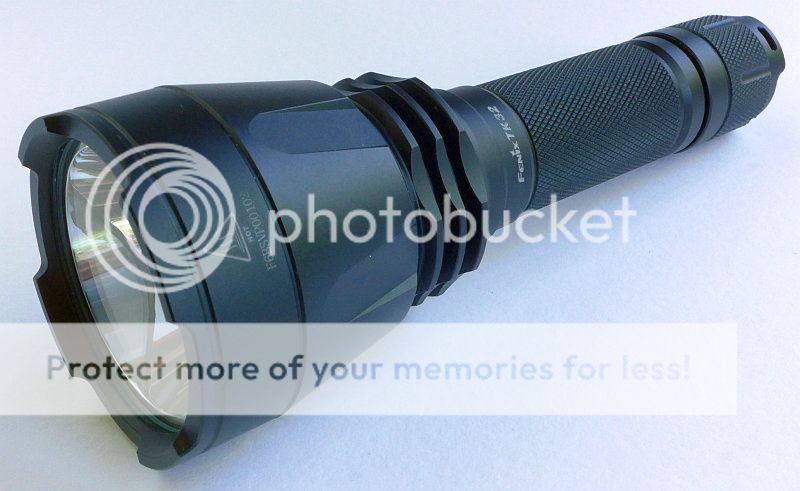
Author's note: due to the general tendency for reviews to become ever longer, this review is presented as a 'Compact Review' with many images being animated to attempt to reduce excessive scrolling. You may need to wait for the images to load fully.
Taking a more detailed look:
The photos here show; the packaging, contents, tail-cap switches, tail-cap removed next to battery tube, details of the additional tail-cap contacts and of the unique double battery tube with special tube liner, the positive contact, tail threads, deep reflector and LEDs.
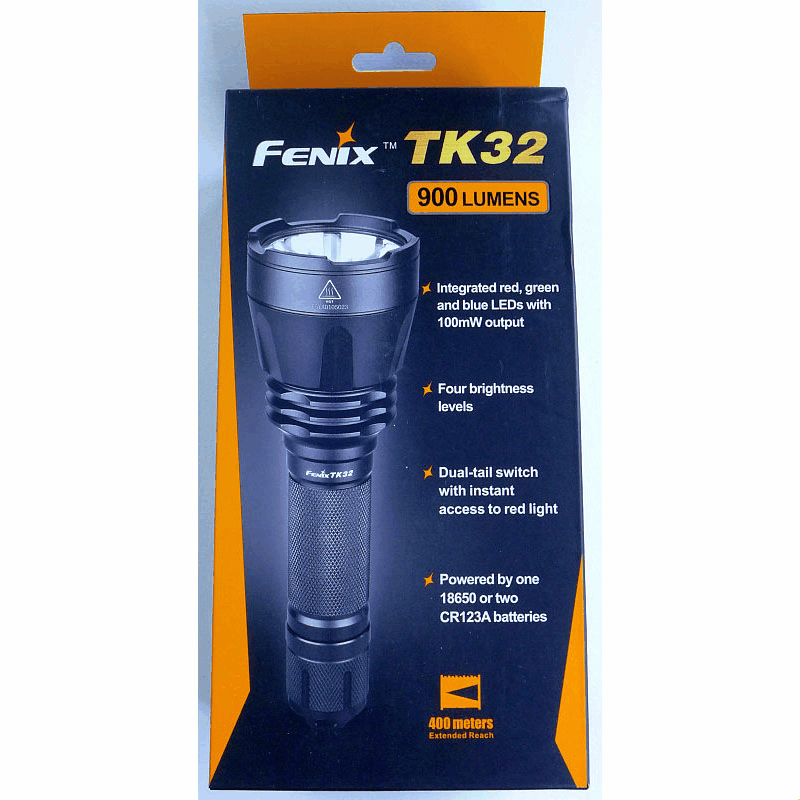
Moving onto the TK32's holster:
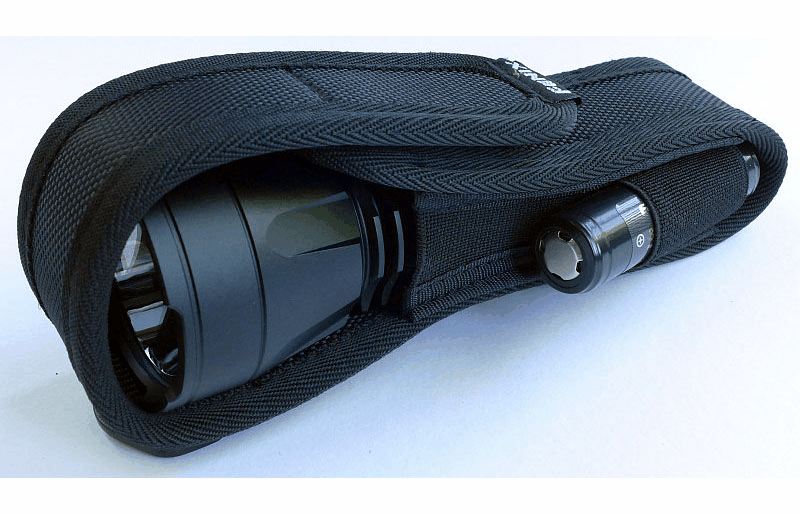
Fenix have tried to add a spare cell holder (which is a very welcome design feature), but unfortunately this have not been thought through. 2x CR123s won't stay put, as putting in the second makes the first fall out. With 18650, as you can see here, the cell wrap is exposed to the tail-cap, and this means you will very quickly destroy the cell's wrap and make the cell unusable when taking the TK32 in and out of the holster a few times. Beware.
If this second loop of elasticated fabric had been positioned higher up the side, it would probably have worked perfectly.

The TK32 is larger than the average single 18650 light thanks to its large head. Of course the larger head gives room for the large reflector and excellent throw. Here it is shown with a Fenix 18650 cell and the Fenix UC45 (the head of which if the same diameter as the TK22).
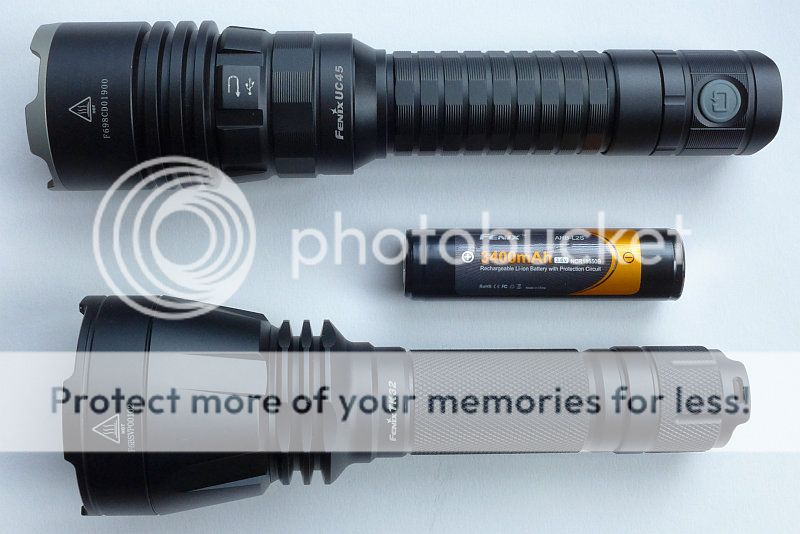
The beam
First of all, the TK32 is not limited to white light. It has three auxiliary LEDs set into the reflector giving red, green and blue beams as well. Here the white output is set to its lowest value and the TK32 cycled through the coloured options.
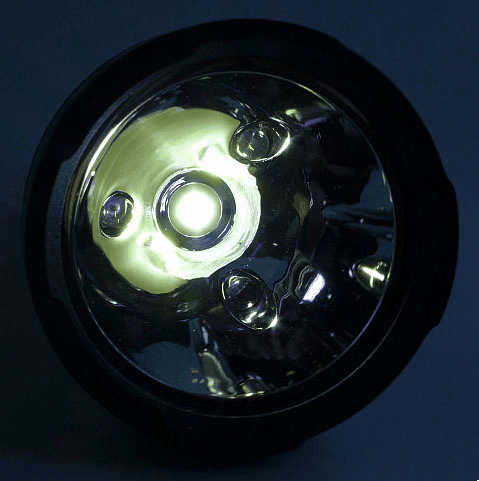
The indoor beam shots are shown with the white beam at a normal exposure, but the coloured outputs shown at a much longer exposure to show the beam characteristics clearly. (NOTE: The colour output is NOT as bright as this shows).
Due to the inset coloured LEDs, the TK32's white beam does show artefacts, though these do not show very clearly in this photo. In normal use, these minor artefacts are not noticeable, and you will only really see them when white wall hunting and rotating the beam. The coloured LEDs have beams filled with artefacts, but for 5mm type LEDs this is normal.
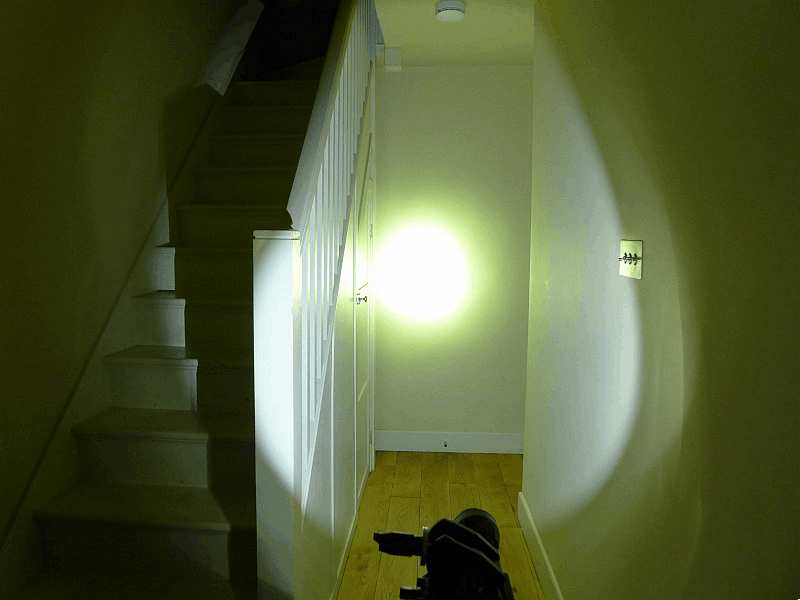
Moving outdoors, and it seemed that even more then usual, a comparison to the TK41 was in order. So first up here is the TK41 as a reference.

Then onto the TK32. The spill is slightly wider and the total output higher. The TK41 still has a slightly more intense hotspot, but the TK32 is incredibly effective.

Modes and User Interface:
Being a hunting light, the TK32 has no flashing modes. There are four white output levels, plus the three low level colour outputs.
From OFF, half press the main power switch for momentary operation of the last selected white output mode. Fully click the latch ON.
From OFF, press the mode switch for momentary operation of the RED output mode. While holding the mode switch, Fully click the main power switch to latch the RED output ON (like this the mode button now does not change modes).
When ON, a single click of the mode switch cycles through Low, Medium, High and Turbo.
When ON, Press and hold the mode switch for 1s to change to colour output. Press the mode switch to cycle through red, green and blue. To return to white output either press and hold the modes switch for 1s again, or switch the main power OFF.
Instant access to red or white output is very useful, but I would have preferred there to be a way to access the green and blue modes too without having to go through white first.
Batteries and output:
The TK32 will run on 18650, CR123, and even RCR123 (although Fenix advise caution when using RCR123), making this more versatile than most single 18650 lights.
Keeping this test as much 'Fenix' as possible, the TK32 was powered using the Fenix ARB-L2S 3400mAh 18650 cell charged with the Fenix ARE-C2 charger.
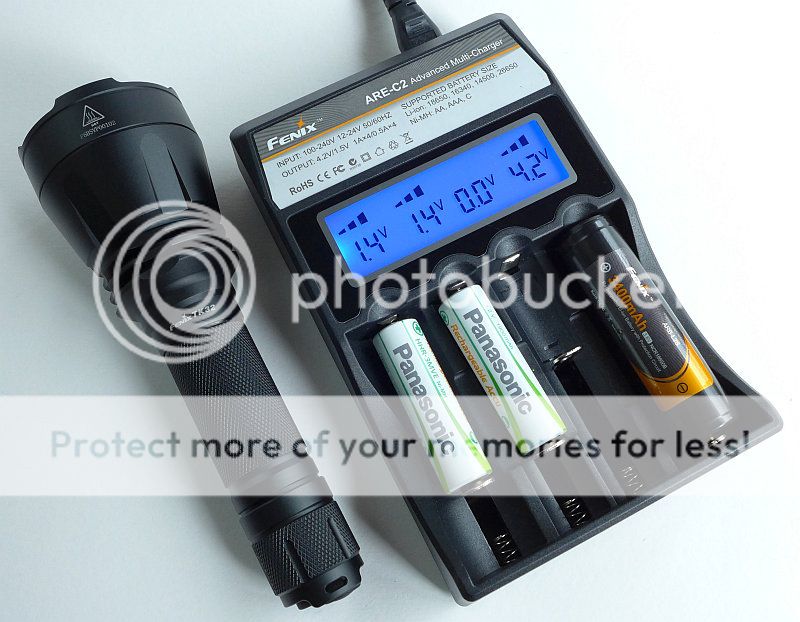
To measure actual output, I built an integrating sphere. See here for more detail. The sensor registers visible light only (so Infra-Red and Ultra-Violet will not be measured).
Please note, all quoted lumen figures are from a DIY integrating sphere, and according to ANSI standards. Although every effort is made to give as accurate a result as possible, they should be taken as an estimate only. The results can be used to compare outputs in this review and others I have published.
| Fenix TK32 using ARB-L2S 3400mAh 18650 | I.S. measured ANSI output Lumens | PWM frequency or Strobe frequency (Hz) |
|---|---|---|
| Turbo | 952 | 0 |
| High | 416 | 0 |
| Medium | 137 | 0 |
| Low | 12 | 0 |
| Red | 5 | 0 |
| Green | 3 | 0 |
| Blue | 7 | 0 |
Measured beam range comes in at 407m.
As there is an electronic switch in a dual switch tailcap, you would expect there to be a secondary tail-cap circuit which would introduce parasitic drain. However with the TK32 this is NOT the case. Fenix have used a unique double battery tube (or a battery tube with liner) to allow direct switching from each of the two tail-cap switches without any additional circuitry.
Measuring the operation of the switches, it is clear each of the switches operates as a simple make/break switch, with the main power switch connecting the negative terminal to the three gold contact pads that touch the battery tube liner, and the mode switch connecting the negative terminal to the exposed threads of the outer battery tube.
This direct dual tail-cap switching is an excellent innovation from Fenix, however one unknown is how robust this double battery tube will prove to be.
A consequence of this is that the existing Fenix remote pressure switch will not work with the TK32, but Fenix have said a TK32 pressure switch is being worked on at the moment.
This following runtime traces show the TK32 with output reset to Turbo after the automatic downshift each 15 minutes. The drop in output at the 1H 52M mark is the low battery warning flash being captured by the output log (with the output log only recording an instantaneous value every 2s it tends to miss low battery warning flashes).
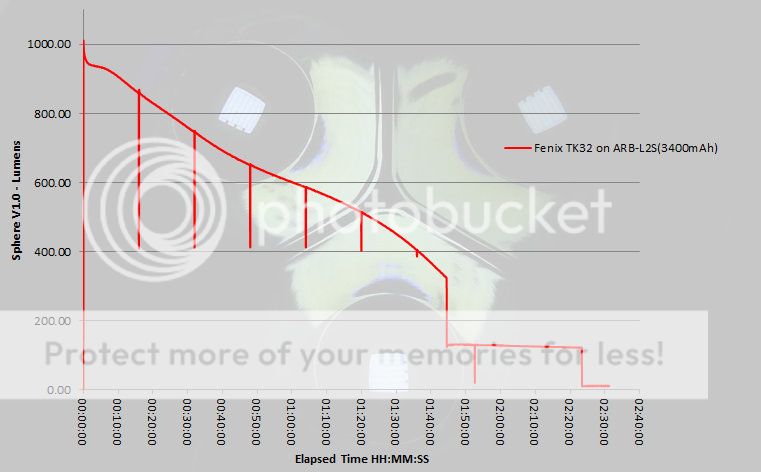
The TK32 out in the field
Focussing on the TK32 as a hunting lamp (though it has proved to be a fantastic hand held 'spotter' lamp), I've fitted it to the Ruger 10/22 for a few field trips. The Fenix gun mount is being used in these photos, but this is very slow to fit and remove. I prefer a QD mount that allows me to use the TK32 hand held, and then back onto the gun once the targets have been identified.
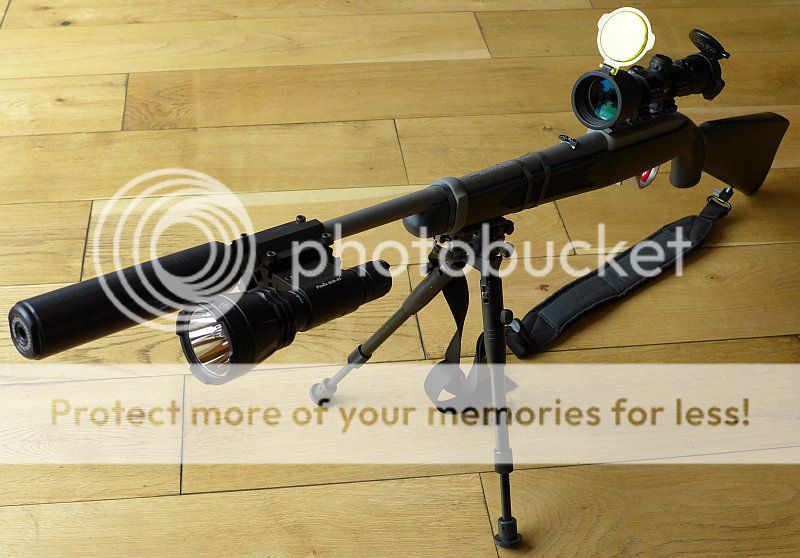
The coloured output is not bright enough to use with a rifle scope, and is better suited to hand held use.
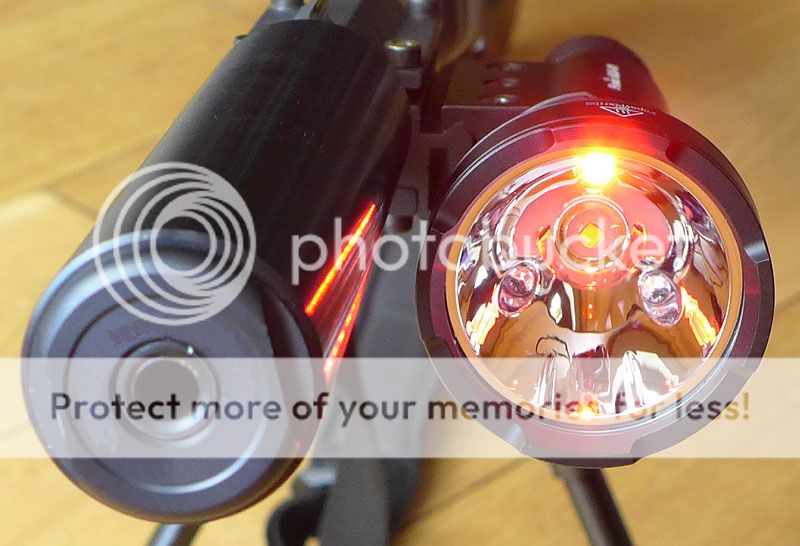
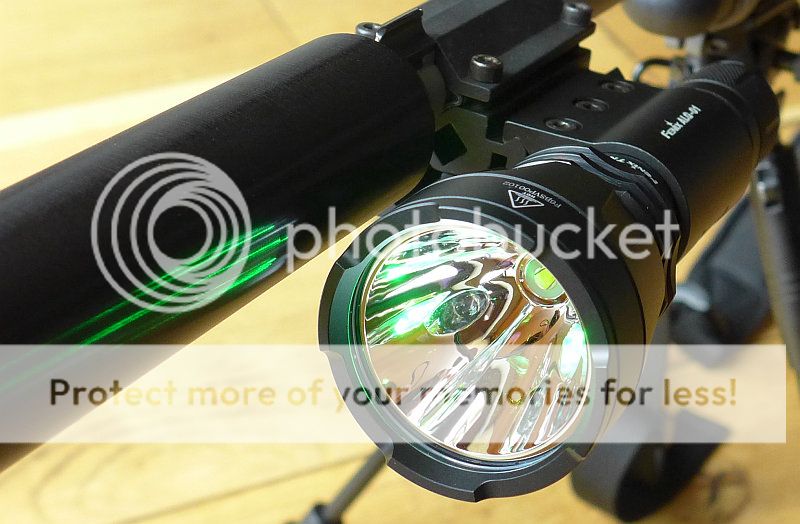
To better show the TK32's range, this location is actually the driving range of the golf course. The range has distance markers out to 250 yards.
You can see the letters of the 250 yard marker lit up in the distance.
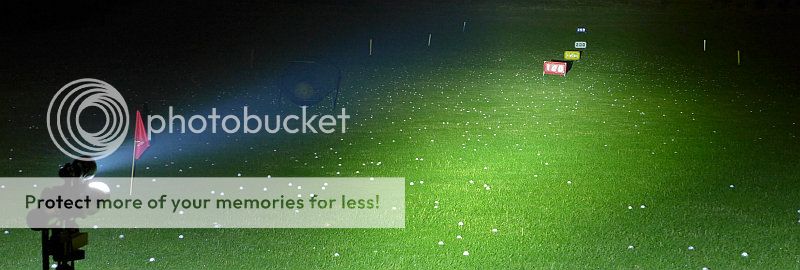
Using a 8-32x scope to illustrate the light as seen through a rifle scope, there are three different views here. The scope set to 8x magnification and the exposure set to give the normal view as seen by the eye. At 8x the view is nice and bright with non-dark adapted vision. Zooming to the maximum 32x magnification, the visible brightness drop significantly (as would be expected), but is still usable. This is initially shown at the 'normal' brightness as if seen with non-dark-adapted eyes, but then shown with an increased exposure to represent the image once your eyes have become partially dark adapted. 32x is not really a practical magnification to use at night, so this is shown just out of interest to see how bright the view would be, and it is still perfectly usable.
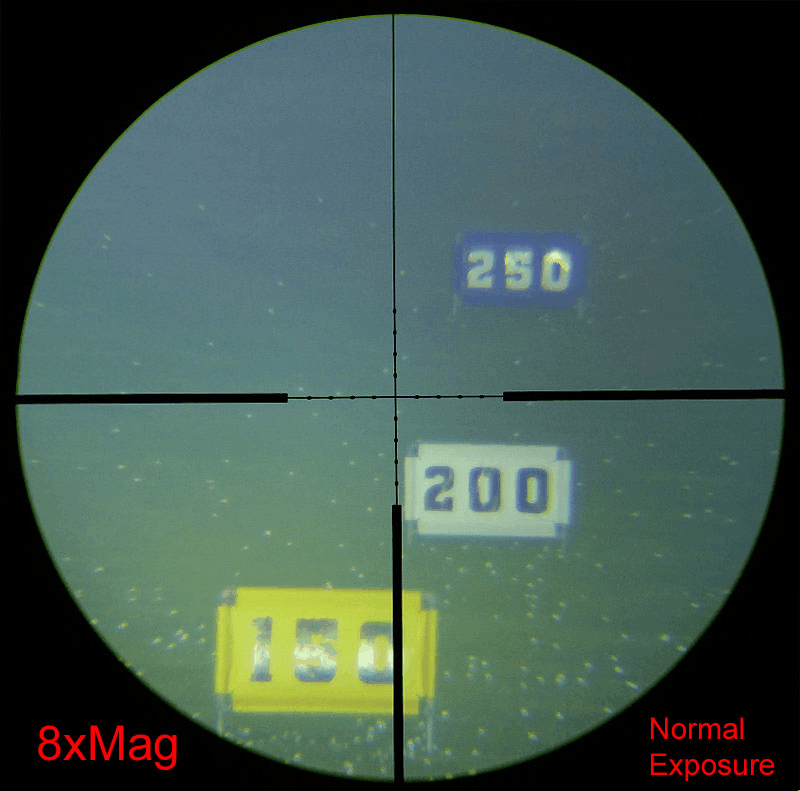
So what about some quarry? Well this is a rabbit out at about 150 yards and turns to see where all this light is coming from. Too far for a certain clean kill with a .22LR, but target identification is absolutely clear.
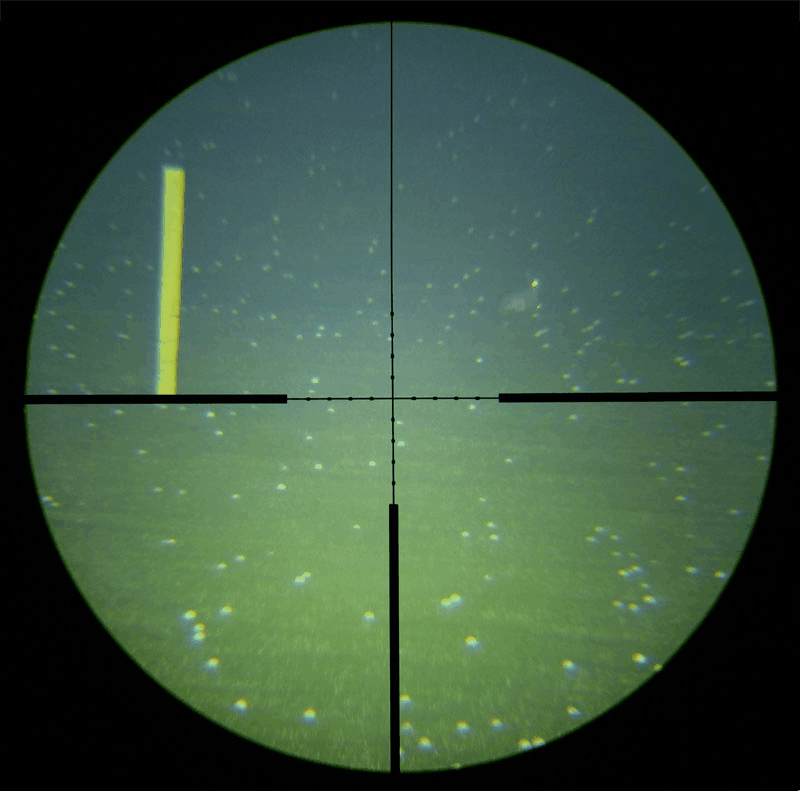
The TK32 proved to be excellent in illuminating the scope view to distances much further than I would ever take a shot with a .22LR, but it also excelled as a hand held light used for spotting targets in the distance. I found the maximum output to also been too intense once my eyes had started to adapt, and I was more often using it on Medium or High for the spotting tasks. The momentary operation also allowed for quick 'looks' at the target without giving it time to fix my location.
The coloured output was useful for checking equipment over, but lacked the power to be used with the rifle scope.
Fenix have taken the well-known beam strength of the TK41, but reducing it down to a single 18650 sized light, resulting in a really great compact search light. The TK32 is well suited to both gun mounting for use with a rifle scope, or hand held use for scanning large areas quickly. The remote pressure switch will make this even better when gun mounted, but hand-held the TK32 is excellent for searching large areas.


Last edited:

